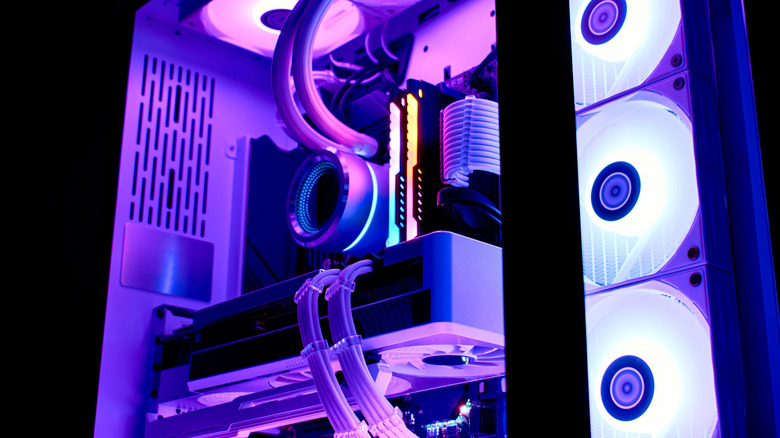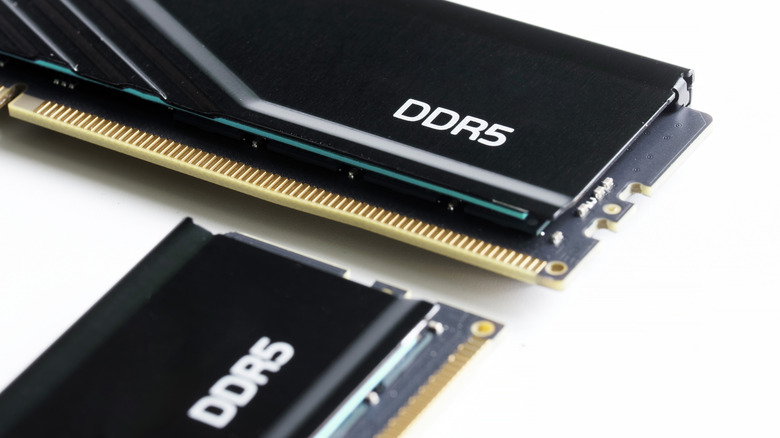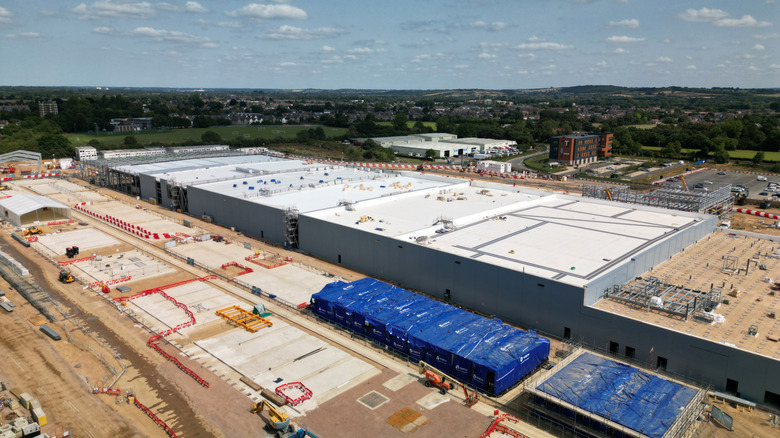AI Is Making These Common PC Upgrades Painfully Expensive
Gaming has never been a truly affordable hobby, but PC gaming is in a league of its own. Decent rigs capable of hitting high frame rates in the latest titles run well over a thousand dollars, while a tricked-out setup with the latest and greatest hardware will have you forking over the equivalent of a month's rent in a luxury apartment. Crypto mining and, now, AI, have driven demand for GPUs, sending prices for Nvidia's premium consumer GPUs well north of the $2,000 mark — and things are only getting worse. AI is now causing a supply shrinkage of what were previously the most affordable PC components.
The latest components to be affected are computer storage and memory. Until now, memory prices had been relatively stable, while the massive production of flash storage led to a supply glut that caused prices to plummet. In fact, solid-state storage got so cheap that companies cut production in late 2024, hoping to drive prices back up. That was great news for PC enthusiasts, since adding more RAM or storage are easy upgrades for nearly any computer.
The AI boom is driving a run on components needed to build more of the data centers that train large models and power their use. Although the parts needed for servers aren't the same as you'd put into a consumer PC, they use many of the same resources, meaning manufacturing is shifting toward those enterprise lines and away from consumer products. Meanwhile, SSDs are the best, fastest type of storage for servers. It's a perfect storm, and computer owners are getting washed.
RAM and storage prices are spiking — and might stay high for a while
2025 may go down in history as the last year PCs were even semi-affordable. Consumer GPUs are finally stabilizing after a multi-year shortage, but they're still more expensive than before the crypto rush and pandemic. Processors aren't cheap, either, especially gaming powerhouses like the latest AMD Ryzen chips. Now that SSDs and RAM are also increasing in price, the average cost of a midrange gaming PC will see an overall bump.
For the first time in three decades, there are shortages of DRAM, SSDs, and even HDDs. RAM kits from the major RAM brands are already rising in price astronomically, with even last-generation DDR4 memory doubling in price over the summer and fall months. SSD storage hikes haven't kicked in yet, with the average price of a standard 2 TB M.2 NVMe drive rising only slightly over the past 18 months. However, many industry leaders expect the upward pressure on the market to bear out by early 2026.
In a possible bellwether for things to come, some stores in Japan are now limiting the amount of memory and storage customers can purchase. With less inventory on hand due to reduced deliveries from their suppliers, these retailers are trying to prevent customers from hoarding as price shocks kick in. Prices may not drop for quite some time, either, with estimates ranging from six months to several years, as the CEO of SSD controller manufacturer Phison said in a recent earnings call. If you've been on the fence about upgrades, either buy now or wait for the economy to move on from the current AI craze.
AI data centers are hogging PC parts
The AI market is largely speculative, with trillions of dollars resting on shaky promises that AI will replace workers and even achieve godlike consciousness. Meanwhile, the most concrete result of the AI race has been data centers — lots of them. The public is now accustomed to hearing about data centers, especially as they impact the environment and local communities. Each of those enormous warehouses is a storage unit for a huge number of powerful computers called servers. They're not so different in construction from your gaming PC, only they're much more powerful. In addition to GPUs that cost upwards of $40,000 and processors that make your consumer CPU look adorable by comparison, they also require monstrous amounts of RAM and flash storage.
It's not as if data centers have only a few servers, either. The computers are arranged in racks to maximize their density, and the largest server farms in the world have a footprint of over 10 million square feet. Even when leaving room for heat to dissipate between the endless aisles of server racks, some estimates show that a million-square-foot data center can hold over 2 million servers.
Not all data centers are so large, of course, but with 4,165 of them in the United States — Virginia alone has more than 600 — and a rush to build more in response to projected demand for AI computing, it's clear to see why the demand for PC parts has skyrocketed. Unfortunately, everyday PC owners and gamers are the ones taking the hit.


